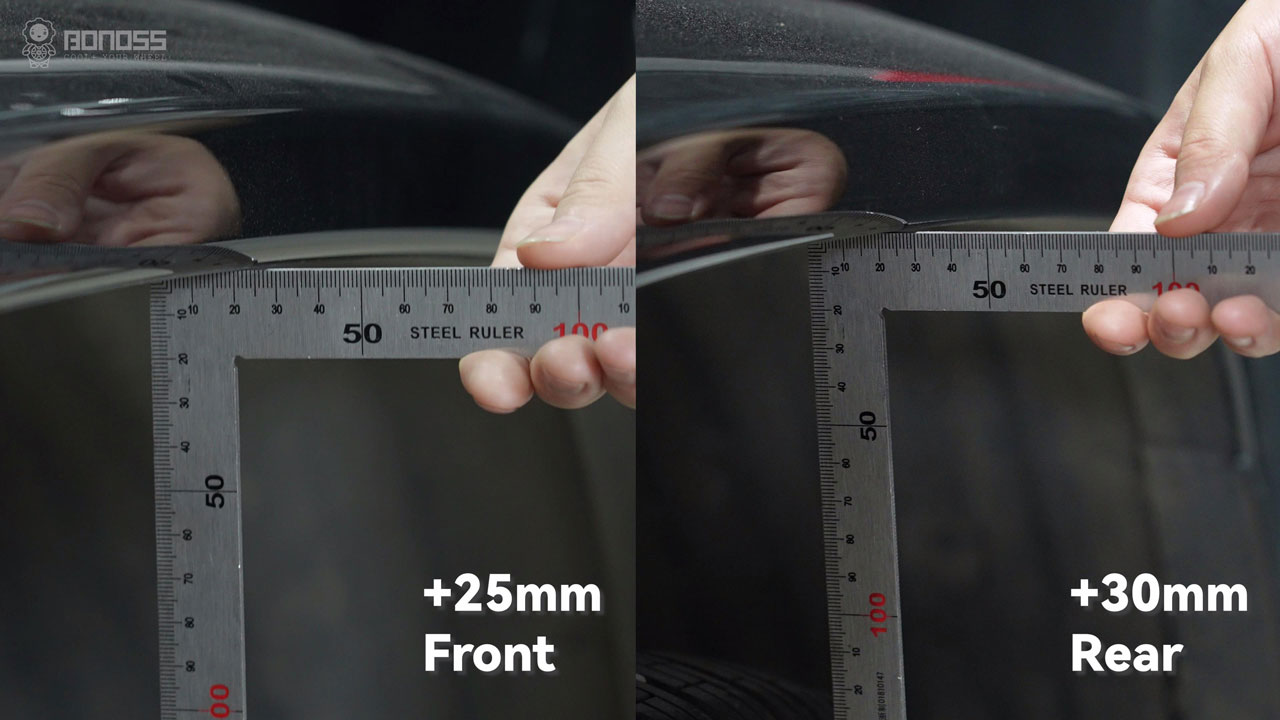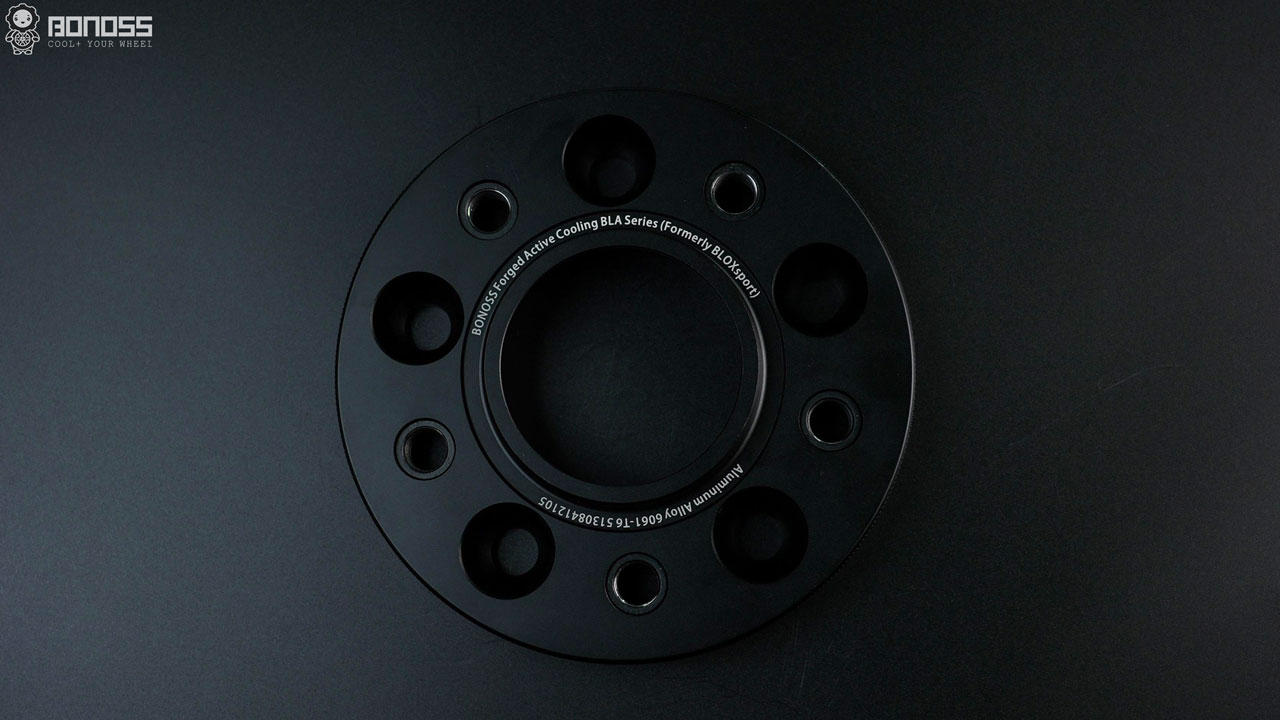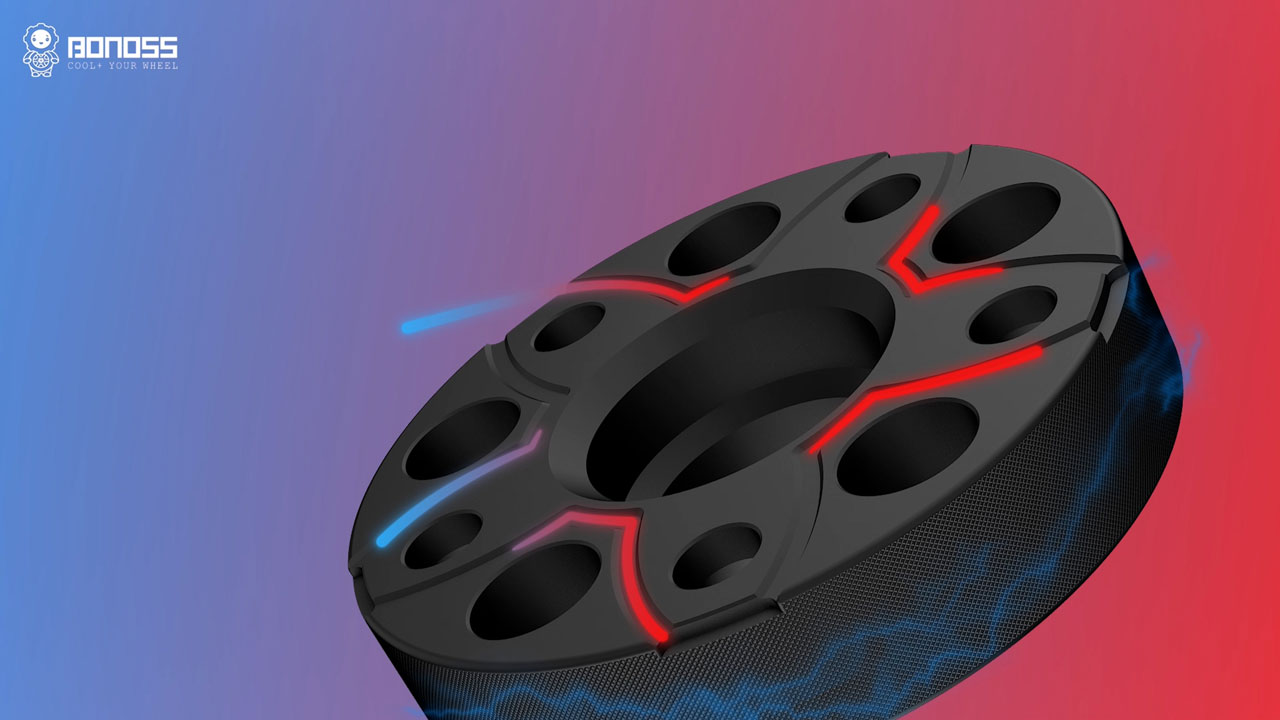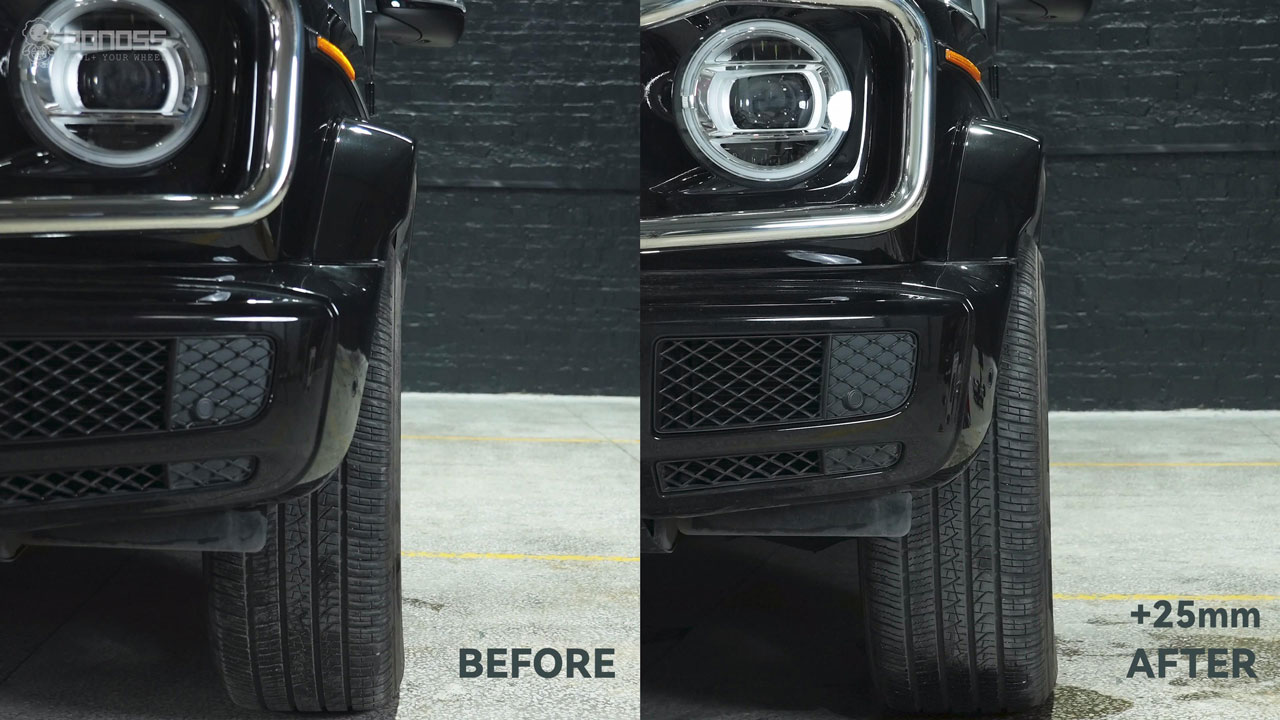Indeed, wheel spacers are very safe for SUVs. Make sure they are vehicle-specific, then there will be zero problems. A vehicle-specific spacer essentially means that it is designed to perfectly fit a specific car model, so it reduces the chance of vibration. By increasing the track width, the contact points of tires are expanded, which results in more stability and better rollover resistance. For many SUVs, this is good to improve driving safety.
The safest SUV wheel spacers should make your wheel setup meets the correct geometry as well as regulations. The allowable thickness of spacers varies by vehicle. The most common way is to measure the distance from the outer tire edge to the fender line. Assuming this distance is 25mm. With 1-inch wheel spacers, you can bring the wheels flush with the fender. Installing wheel spacers below this thickness usually will be very safe and beneficial.

Is There A Downside to Wheel Spacers?
Wheel spacers are no different than a set of low-offset wheels. As long as they are high-quality, there is no significant downside. Apart from the base function of wheel spacers, BONOSS spacers provide more additional advantages for your SUV. For example, the active cooling technique. Distributed in petal shape, the cooling grooves allow the external cold air to flow continuously inside the wheel spacer when it rotates.
The flowing air takes away the heat, so it achieves the purpose of actively dissipating heat for the braking system. In addition, the side knurling design eliminates internal stress and enlarges the cooling area which is good for the active cooling effect. This boosts the heat dissipation efficiency of the rotors, reducing brake thermal decay, hence improving road safety. With the same price as many quality spacers, BONOSS ones are more advantageous.


Do I Need Bolt-on Wheel Spacers or Slip-on Ones?
There are different wheel spacers: bolt-on types and slip-on types. Simply put, if you need above 25mm spacers, professional mechanics will recommend bolt-on types. Because the bolt-on spacers are bolted to the vehicle hubs with provided wheel bolts. Then the wheels are secured on the spacers with OE lug bolts. This ensures a safe thread engagement. You don’t need a set of new extended wheel bolts.
On the other hand, slip-on spacers simply slide over your existing wheel hubs, secured by a set of new longer bolts. Due to such structure, they are made thinner. If you need around 3mm to 20mm wheel spacers, slip-on types will do. They are primarily made for vehicles that use wheel bolts rather than lug nuts. So, the installation process is the same as installing the wheels.






